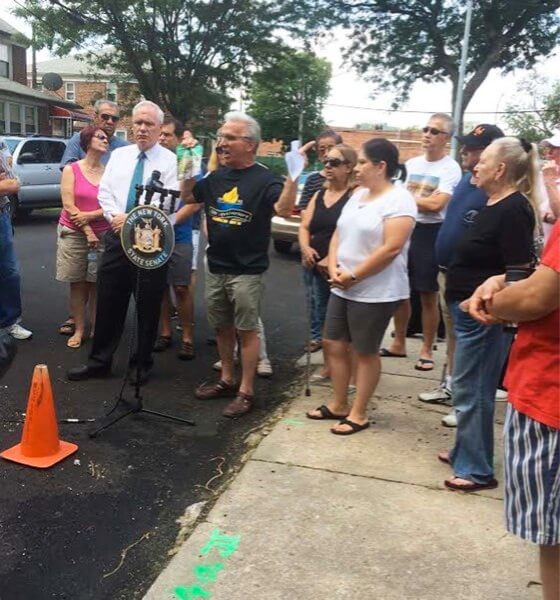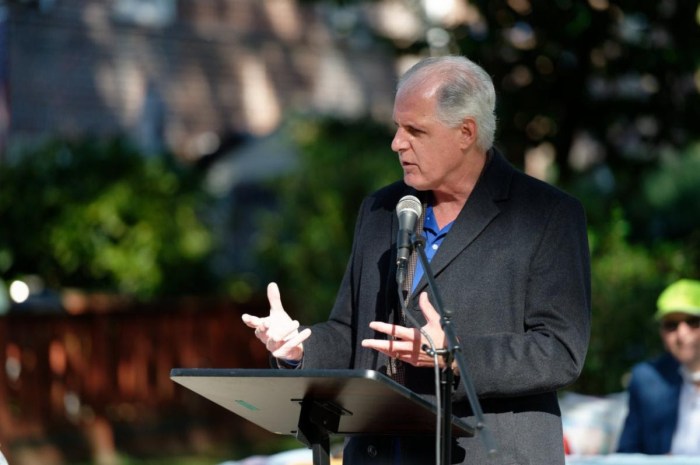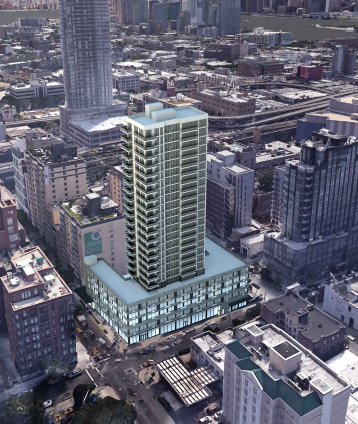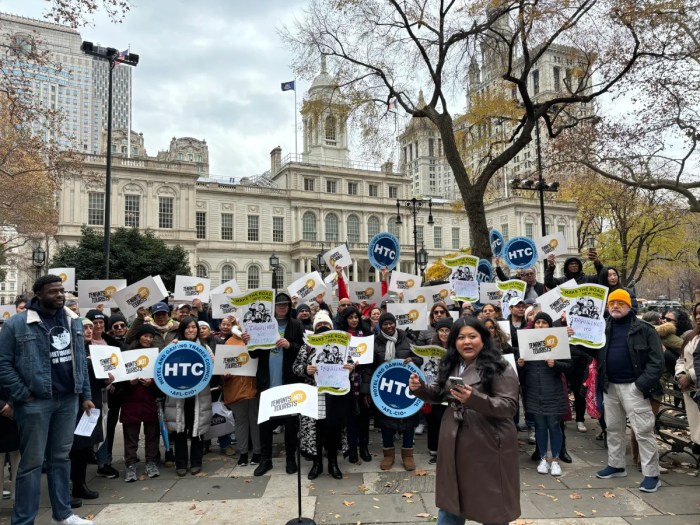By Mark Hallum
A city Department of Environmental Protection project to install bioswales across Flushing to clean up nearby waterways has residents fuming over the lack of homeowner notification.
State Sen. Tony Avella (D-Bayside) and Joseph Branzetti, president of the Friends of Fort Totten Parks and the Northwest Bayside Civic Association, held a news conference July 14 to call upon the DEP and the de Blasio administration to include residents in the decision to place bioswales in front of their homes.
Dozens of Flushing homeowners attended the news conference and shared their stories about how they heard about the project and how they felt about the installations. Many residents only found out as they questioned Department of Design and Construction employees marking sidewalk space which have suitable conditions for bioswales, others by word of mouth.
“There is no way a homeowner, a taxpayer, can have this forced upon them without any input whatsoever.” said Jena Lanzetta, vice president of the civic association. “An open and honest discussion needs to be started regarding the city’s plans and an opt-out policy – taxpayers deserve that choice”
According to the DEP, bioswales are green infrastructure installations cut into the pavement to absorb rain water and remove some of the burden from the sewer system. The ultimate goal of a bioswale project is to clean up waterways, in this case, Flushing Creek and Flushing Bay, a DEP spokesman said. A similar project in Brooklyn launched in June by the city agency will cost $35 million and install more than 800 bioswales to improve water quality in Jamaica Bay.
Branzetti, a resident of Murray Hill, says that infrastructure which absorbs water into the ground is less than ideal in what he calls the lowest point in Flushing. Many homes in his neighborhood have pumps to remove water from basements under normal conditions, and he fears bioswales will only make the problem worse and cost homeowners money.
Residents complain bioswales will take away from the parking space, while trees planted in the installations will cause sidewalks to crack, yet again costing homeowners money to fix. Other fears go back to the issue of city trees being planted in the homeowners’ yards and then neglected by the Parks Department tasked with their upkeep.
“The homeowner should have the right to say, ‘I don’t want this.’ If you look at the sidewalk here that’s marked off, half the sidewalk will be gone,” Avella said, pointing to the green spray paint in front of one Flushing home. “Is the homeowner going to have to maintain this? The city doesn’t maintain the city trees as it is now. They’re going to come out and maintain this little island? Of course, they’re not.”
Avella went on to make the argument that the Zika virus is carried by mosquitoes, which breed within areas of standing water and bioswales are counter-intuitive to the city’s fight to keep the disease at bay.
Lynn Boledovic said she recently replaced the sidewalk in front of her house at her own expense only to have it marked up and possibly torn out by the project, which is in its screening phase. She lives on a corner and her property is slated for three bioswales.
Reach reporter Mark Hallum by e-mail at mhall




































